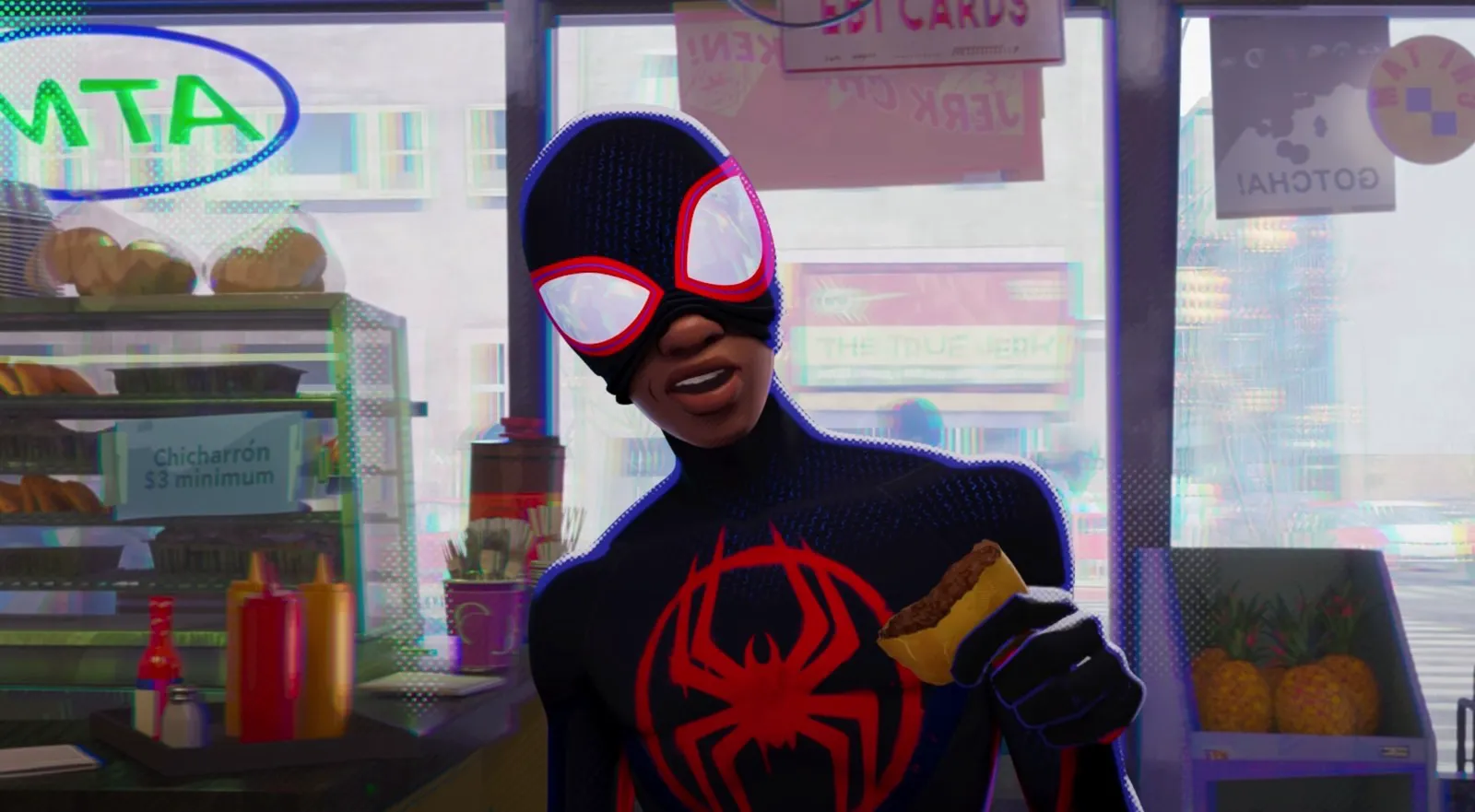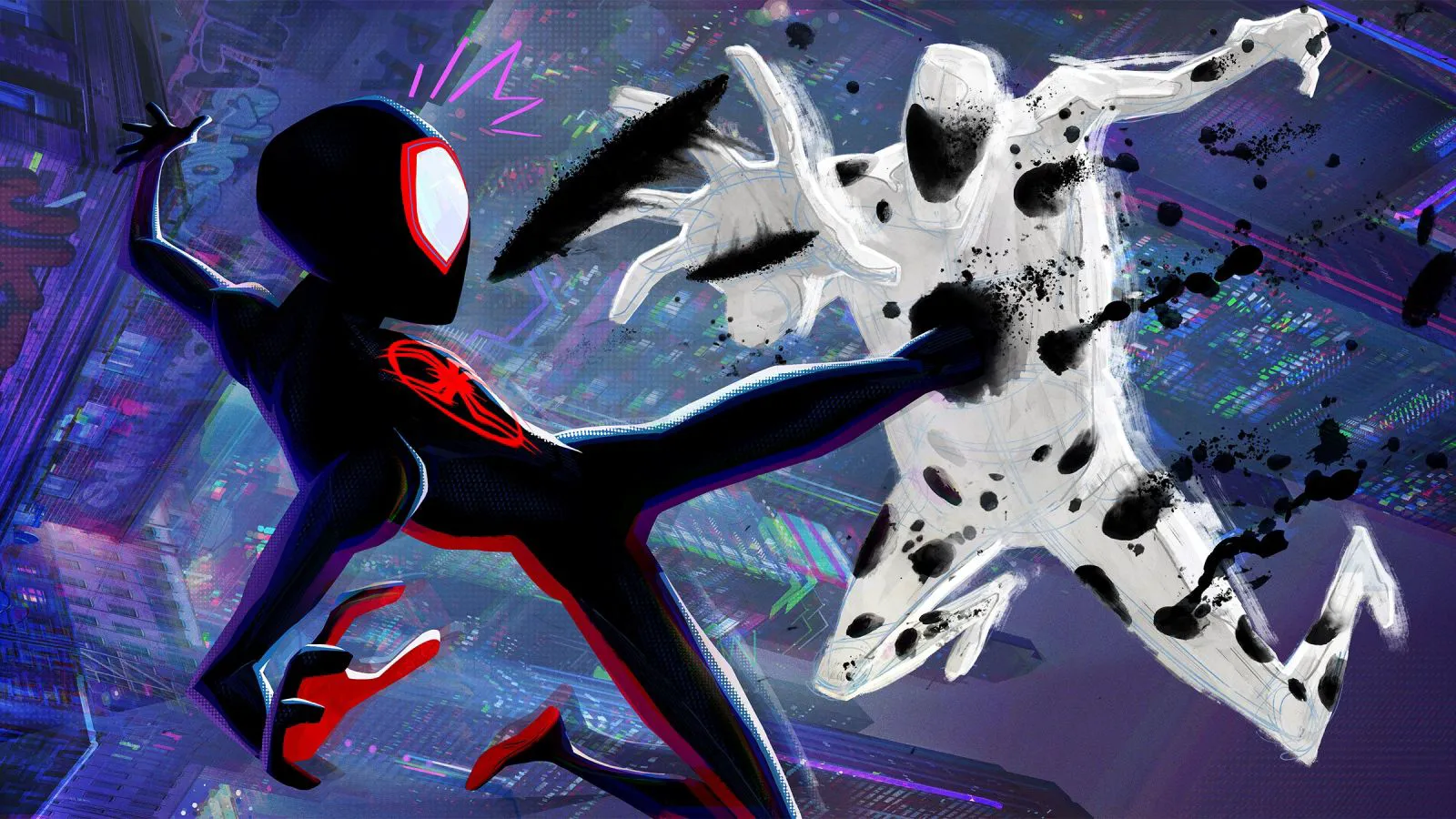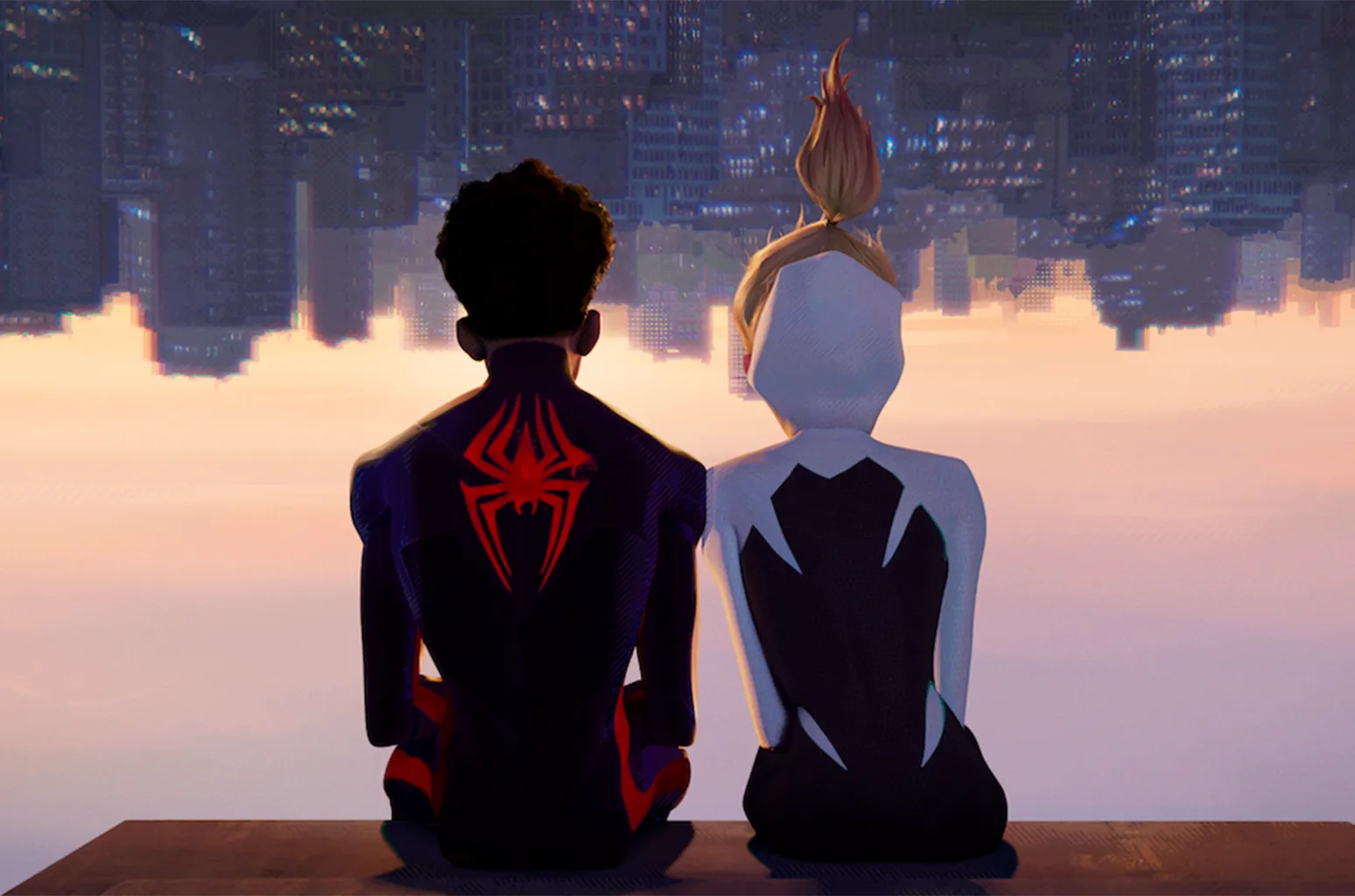Miles Morales’ dizzying arachnid reaches a new level - more action, more spiders, and more comic book.
Miles Morales successfully wears the superhero tights and saves New York from criminals. But the burden of being a savior sometimes prevents the guy from realizing himself in life, so tension arises in the Spider-Man family. The situation is aggravated when the hero faces the Spot, and even more so when Morales’ beloved, drummer Gwen Stacy, returns from another world and drags the spider into a new adventure.

A still from the animated film “Spider-Man: Across the Spider-Verse”
The most exciting revision of superhero stories has come from where no one expected. While Marvel was pompously presenting the cinematic Spider-Man, Sony Pictures released its own radioactive mutant in 2018 - an animated film that instantly became the flagship of the genre. Thus, from a dark horse, “Into the Spider-Verse” turned into the main spider performance on the screen. The animated film seemed to complete a twenty-year cycle of comic book adaptations, returning them to their native land: from realistic films back to the pathos of colorful glossy pictures, where heroes and villains participate in a real titanomachy. Everything around sparkled, was in constant dynamics and dizzying pace, not giving a second to rest, moreover - even to a coherent explanation of why the universe of the beloved superhero, for example, has gone so far. Here, the animated Spider-Man is not enough of New York: he went to look for himself in new places, bypassing underground tunnels and skyscraper spiers. We realized that 15-year-old Miles Morales, as well as his talented screenwriters, prefer adventures in the multiverse - an ideal place to collect arachnids of all stripes.

A still from the animated film “Spider-Man: Across the Spider-Verse”
The sequel expectedly raised the stakes - since there are hundreds of thousands of species of spiders in nature, why not expand here as well: the cute team from the first film, which, in addition to Morales, included the anime version of Penny Parker, the comical animal Spider-Ham, the bloated Parker, and the highlight of the show - the noir Spider-Man from the 30s, was replaced by an entire army. The predatory fauna created in the interdimensional web is literally dazzling: there is the brutal Spider-Man 2099 in stylish equipment (with Oscar Isaac’s voice acting), and the drummer Gwen Stacy, who has embarked on a heroic path, and the pregnant Spider-Woman, and even the punk Spider-Man in the spirit of the Sex Pistols, not to mention the completely stunning appearance of the Indian version of Peter Parker - Pavitr Prabhakar, who cuts through the web through futuristic Mumbai. The film’s directorial trio - Joaquim Dos Santos, Kemp Powers, and Justin Thompson (for the sake of comedy, they can also be presented as three different spiders) - have already entered the annals of superhero stories: they finally turned the multiverse from a fashionable thing and cotton candy for the fandom into a kind of narrative move. The authors are not only masters of revision (you have not seen such a “Spider”, they say), but also inveterate anarchists trying to electrify the film from all ends: something here lives according to the laws of cinema, especially in terms of composition and in-frame editing, something completely repeats the grammar of comics, whether it is color flashes or a whole language of heroic poses, and something completely reminds of some kind of zoetrope - because the movement of images twisted into a ring is the reason why the effect of cinema happens to us.

A still from the animated film “Spider-Man: Across the Spider-Verse”
In this spider atavism, in the jaw-dropping graphic frenzy, where they rush through portals for two hours, hand out cuffs, release webs, and run through all the color spectrums, there is some kind of primitive charm of the attraction. The conversation between “Across the Spider-Verse” and the audience is only in the language of excess and polymorphism, in the coding of the animated film with secondary samples of comics and animated films - there is a lot of pastiche, mockery, and stylistic games that run from ridiculous animated series about Spider-Man of the 70s to imitation comic singles, glossy super crossovers, and video games. The style of the second “Spider” is all styles, connected through sticky spider fibers.
This time, something has changed: there are an order of magnitude more lyrical digressions in the animated film, Gwen Stacy has a central image and conflict that is not equal to Morales’ spider problems, and there are even more neon flashes in the frame, except that now this riot of colors unfolds in the headquarters of Spider-Men. Watching a friendly superhero wreak havoc in a supermarket, fighting the Spot, is, of course, many times more interesting than running through the same coming-of-age drama about superhero responsibility and the price of his becoming. But with the nuances and protracted timing, “Across the Spider-Verse” is a real stream of creativity, punk rock from the world of comics, working on uninterrupted power and respect for graphic culture: from the sketches of the Renaissance to the legendary images of Jack Kirby.